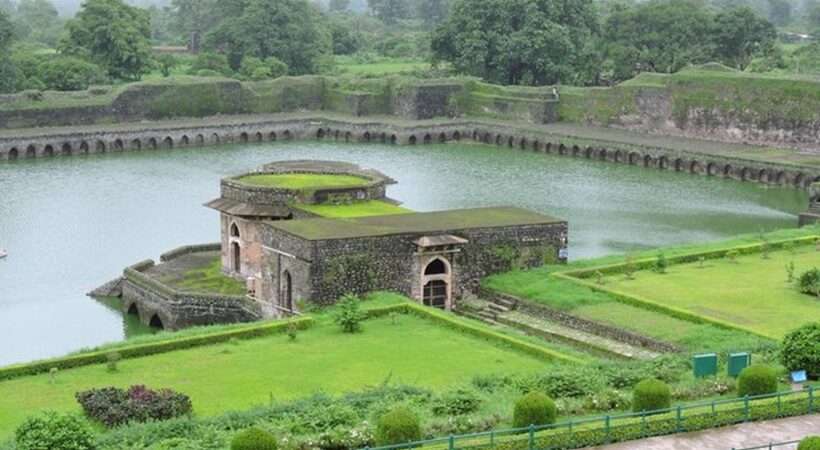Availability of potable water is becoming a major challenge in the 21st century, combined with climate change and the irregularity of monsoons. With growing water shortages and droughts in various parts of India in the past decade, the focus has slowly started shifting towards developing water conservations infrastructure around the country. According to some experts, it is high time to understand the ancient water conservation techniques developed in South Asia to draw inspiration and understanding for combating this challenge.
For centuries, the management of water and risks associated with the monsoon rains has been central to people, societies and their environments. Looking at medieval times, it becomes clear that the construction and management of harvesting and hydraulic systems were integral to overcoming water shortages and unpredictable monsoons.

Mandu, a fort-palace complex in Madhya Pradesh provides an illuminating example of water conservation. Tracing its history to the Paramara dynasty in the 8th century CE, Mandu was occupied by several dynasties in the medieval era. Located in the semi-arid region of Malwa, the fort complex was built on a hilltop with minimal access to groundwater. To combat the scarcity of water, complex rainwater harvesting infrastructure was developed to supply water to the fort throughout the year.
The elaborate water harvesting techniques catering to the needs of the people in those times, still continue to serve those who live in the city. The water management system at the fort complex at Mandu comprised of about 1200 water tanks that collected rainwater and supplied it to the rest of the fort through different channels. These 1200 tanks are spread across 70 monuments in the fort complex. However, over the years now, water conservation techniques are visible in only 700 water tanks across five of these monuments.
One of these monuments is also the most iconic and visited spot in the city — the Jahaz Mahal (Ship Palace). Built in the 15th century by Ghiyas-ud-din Khilji, the Mahal is surrounded by two artificial lakes called Munj Lake and Kapur Lake. These lakes, on either side of the fort, are connected by a canal that ensured equal distribution of water in the two lakes when it rained heavily.
When both lakes fill up during the monsoons, the Mahal looks like a ship sailing in the sea, thus the name, Jahaz Mahal. Jahaz Mahal also had several wells in the premises and most of these were large stepwells also known as baoris. While Andheri Baori maintained a cool temperature in the palace, 265 feet deep Ujala Baori was built away from the palace complex. The water in both these tanks was used for drinking purposes among other uses.

When all the channels were functional, they formed an important feature in the water management system at Mandu. There were underground channels that supplied water from the man-made lakes and tanks. Some of the water channels were intricately designed and built on the floor surface of the fort complex. Several cisterns inside the fort complex stored water from the lakes and tanks. Some of these cisterns served the purposes of ‘royal bath’ (also known as Hamam Ghar) with steps being constructed on the sides of the cisterns for the ease of non-swimmers.
The water from Andheri baori was connected to the Hamam Ghar through three different tunnels. The first tunnel was above a cooking stove, which heated the water. While the second one was meant to convert this water to steam and the third supplied the cold water.
This complex interconnected water infrastructure allowed the denizen of Mandu’s year-long supply of water without solely depending on monsoons or groundwater. The delicate balance between the usage of available water sources provides an interesting example for the 21st century.



















